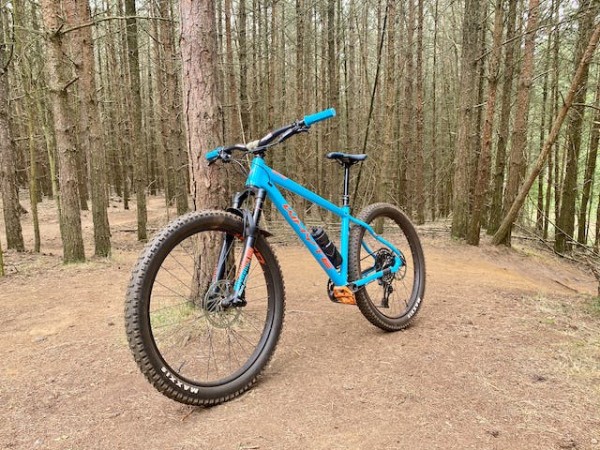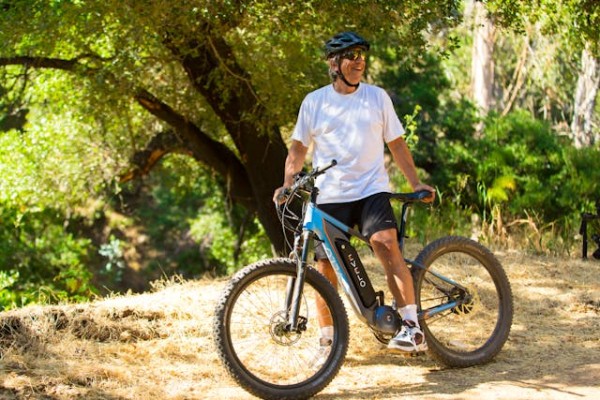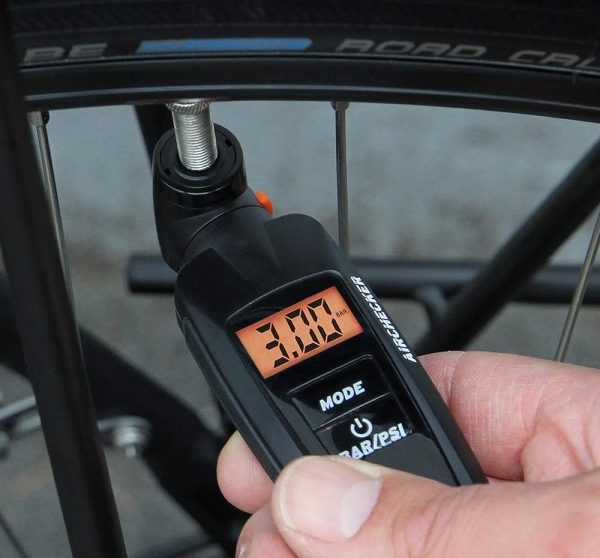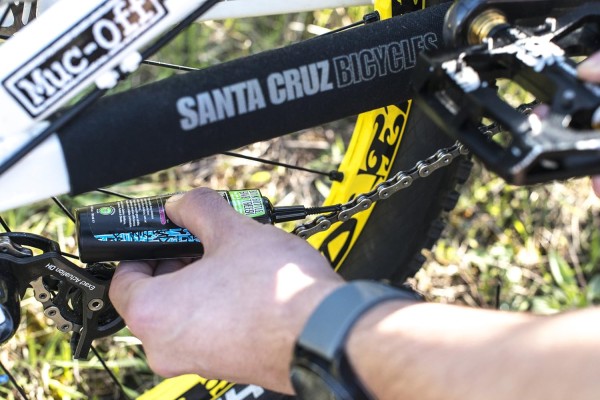Looking to buy a used bike? Before you make a decision, it’s important to be aware of the technologies and standards that might not be worth your investment. While there are plenty of advancements that can greatly enhance your cycling experience, there are also some that may leave you feeling disappointed. In this guide, we will highlight seven technologies and standards that you should avoid when purchasing a used bike.
From suspension systems that may not offer the smooth ride you desire to outdated gear systems that could leave you struggling on uphill climbs, knowing what to steer clear of will help you make a more informed decision and find the perfect ride for you.
7. Suspension Systems

When buying a used bike, avoid bikes with outdated or unreliable suspension systems. Suspension systems play a crucial role in providing a smooth and comfortable ride, absorbing shocks and bumps. Outdated suspension systems may not provide adequate support and can lead to a jarring and uncomfortable riding experience. Look out for bikes with suspension systems that are no longer in production or have a history of reliability issues. These bikes may require frequent repairs and maintenance, resulting in additional expenses.
It’s important to ensure that the suspension system is in good working condition and has been properly maintained by the previous owner. Check for any signs of damage or wear, such as leaking seals or worn-out components. By avoiding bikes with outdated or unreliable suspension systems, you can ensure a safer and more enjoyable riding experience.
6. Disc Brakes
To ensure a smooth and reliable ride, avoid bikes with outdated or unreliable disc brakes when purchasing a used bike. Disc brakes are an important component of a bike’s braking system, providing superior stopping power and modulation compared to traditional rim brakes.
When evaluating disc brakes on a used bike, keep the following points in mind:
- Rotor Wear: Check the condition of the rotors, ensuring they aren’t excessively worn or warped. Warped rotors can cause vibrations and reduced braking performance.
- Caliper Alignment: Inspect the calipers for proper alignment. Misaligned calipers can result in uneven pad wear and compromised braking power.
- Pad Wear: Examine the brake pads for signs of wear. Worn pads need to be replaced to maintain optimal braking performance.
- Hydraulic System: Test the hydraulic system for any leaks or issues with the brake lines. A well-maintained hydraulic system ensures consistent and reliable braking.
5. Carbon Fiber Frames
If you’re considering buying a used bike, be cautious of carbon fiber frames. While carbon fiber frames are lightweight and offer excellent strength-to-weight ratios, they can be difficult to assess for damage.
This is because carbon fiber frames can hide internal damage that may compromise their structural integrity. Unlike metal frames, carbon fiber frames don’t show visible signs of wear and tear, such as rust or dents. Therefore, it’s crucial to thoroughly inspect carbon fiber frames for any signs of delamination, cracks, or structural compromise. Pay close attention to the joints and areas of stress concentration, as these are more susceptible to damage. Additionally, it’s advisable to have a professional carbon frame specialist assess the frame before purchasing to ensure its safety and durability.
4. Electronic Shifting
Be wary of electronic shifting when purchasing a used bike. While electronic shifting may seem like a fancy and convenient feature, it comes with its fair share of drawbacks.
Here are four reasons why you should think twice before investing in a used bike with electronic shifting:
- Limited repair options: Electronic shifting systems are complex and require specialized knowledge for repair. Finding a technician who’s familiar with these systems can be challenging and expensive.
- Higher cost: Electronic shifting components are significantly more expensive than their mechanical counterparts. Repairing or replacing these components can quickly add up, making maintenance costs higher.
- Battery dependency: Electronic shifting relies on batteries to function. If the battery dies during a ride, you’ll be left with a bike that’s stuck in one gear until the battery is replaced or recharged.
- Compatibility issues: Electronic shifting systems aren’t always compatible with other bike components. Upgrading or swapping parts may become a tedious task, limiting your options for customization.
3. Press Fit Bottom Brackets
Press-fit bottom brackets have become increasingly popular in the cycling industry due to their lightweight design and improved stiffness. However, it’s important to consider the potential drawbacks before making a decision. Press-fit bottom brackets rely on a tight press fit between the frame and the bearings, eliminating the need for threads. While this can result in a lighter and stiffer system, it can also lead to creaking and premature bearing wear.
Additionally, press-fit bottom brackets require specific tools for installation and removal, making maintenance more challenging for the average rider. It’s crucial to carefully inspect the condition of the bottom bracket and consult with a knowledgeable mechanic before purchasing a used bike with a press-fit bottom bracket.
2. Non-Standard Wheel Sizes
Consider the potential drawbacks of non-standard wheel sizes when purchasing a used bike. These unconventional wheel sizes may seem appealing at first, but they can pose several challenges that may affect your riding experience. Here are four key issues to keep in mind:
- Limited availability of replacement tires and tubes: Non-standard wheel sizes often have a limited selection of compatible tires and tubes. This can make it difficult to find replacements when needed, and you may end up compromising on quality or performance.
- Compatibility issues with bike accessories: Non-standard wheel sizes may not be compatible with certain bike accessories such as fenders, racks, or trailers. This can limit your options when it comes to customizing your bike or adding functionality.
- Reduced resale value: Non-standard wheel sizes are less common and may not appeal to a wider range of buyers. This can potentially affect the resale value of your bike, making it harder to sell in the future.
- Limited availability of spare parts: If your bike requires any repairs or maintenance, finding spare parts for non-standard wheel sizes can be challenging. This may result in longer wait times or higher costs for repairs, causing inconvenience and frustration.
1. Outdated Gear Systems
Take caution when purchasing a used bike with outdated gear systems. Outdated gear systems can significantly affect the performance and efficiency of your bike.
One common outdated system is the friction shifting system, where the gears are shifted by manually adjusting the derailleur. This system requires precise adjustments and constant monitoring, making it less user-friendly compared to modern indexed shifting systems.
Another outdated gear system is the freewheel system, which is less durable and efficient compared to the modern cassette system. Freewheel systems also limit your options for upgrading and replacing individual components.
Additionally, older gear systems may lack the range of gears that are available in modern systems, limiting your ability to tackle different terrains. When buying a used bike, ensure that the gear system is up to date to avoid potential issues and enjoy a smoother riding experience.
Frequently Asked Questions
What Are the Advantages and Disadvantages of Using Rim Brakes Instead of Disc Brakes on a Used Bike?
When considering the advantages and disadvantages of using rim brakes instead of disc brakes on a used bike, it’s important to note that rim brakes have been widely used for many years. They’re lighter, less expensive, and easier to maintain than disc brakes.
However, they’ve less stopping power, especially in wet conditions. Disc brakes, on the other hand, provide better braking performance and are more reliable in all weather conditions.
Are There Any Other Materials Used for Bike Frames Besides Carbon Fiber That Buyers Should Be Aware Of?
When buying a used bike, it’s important to consider the materials used for the frame. Carbon fiber is commonly used, but there are other options to be aware of.
Aluminum frames are lightweight and affordable, making them a popular choice. Steel frames offer durability and a smooth ride, but they can be heavier. Titanium frames combine strength and lightness, but they tend to be more expensive. Understanding these materials will help you make an informed decision when buying a used bike.
How Does Electronic Shifting Compare to Traditional Mechanical Shifting in Terms of Performance and Maintenance?
Electronic shifting offers superior performance and reduced maintenance compared to traditional mechanical shifting. With electronic shifting, you’ll experience faster and more precise gear changes, allowing for smoother and more efficient rides.
Additionally, electronic systems require less maintenance, as there are no cables to stretch or adjust. Instead, the shifting is controlled electronically, ensuring consistent and reliable performance. This technology is a great choice for those seeking a high-performing and low-maintenance option for their used bike.
Are There Any Other Types of Bottom Brackets That Buyers Should Consider Instead of Press Fit Bottom Brackets?
When it comes to bottom brackets for your used bike, there are alternatives to the press fit standard. Consider the threaded bottom bracket, which offers a more secure and reliable fit.
With press-fit, there’s a risk of creaking and premature wear. But with threaded, you’ll have peace of mind knowing your crankset will stay in place. Remember the saying, ‘If it ain’t broke, don’t fix it.’ So, skip the press fit and opt for the tried and true threaded bottom bracket.
Conclusion
After exploring the world of used bikes, you have now become aware of the technologies and standards to avoid. With suspension systems that feel more like trampolines, disc brakes that lack stopping power, and carbon fiber frames that seem fragile, it’s clear that technology isn’t always better. Don’t get caught up in the allure of electronic shifting or non-standard wheel sizes either. Stick with what works and avoid the pitfalls of outdated gear systems and press fit bottom brackets. Choose wisely and enjoy your ride without any unnecessary complications.





